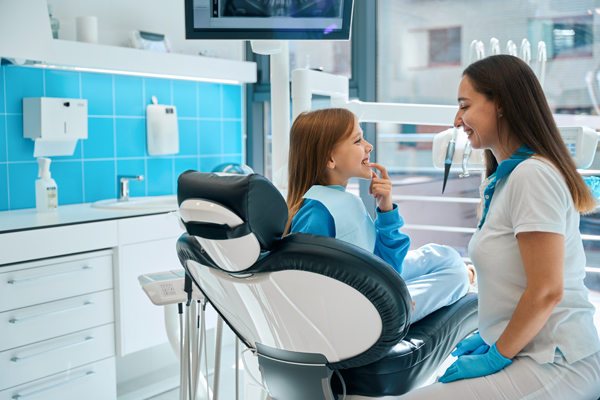An Overview of Phase Two Orthodontics

Phase Two orthodontics is the second stage in comprehensive orthodontic treatment, typically following an initial intervention known as Phase One. The primary objective of Phase Two orthodontics involves perfecting alignment, correcting bite issues, and achieving optimal aesthetics and function. Patients often undergo Phase Two orthodontics during adolescence, once most permanent teeth have emerged, allowing for precise and lasting orthodontic adjustments.
Goals of Phase Two Orthodontics
The goals of Phase Two orthodontics focus primarily on achieving a healthy, functional, and visually appealing smile. During this stage, orthodontists address any remaining misalignments or bite irregularities identified after completing Phase One treatment. Common objectives include correcting crowding, closing gaps, and aligning teeth precisely. Phase Two orthodontics also addresses more complex issues such as overbites, underbites, crossbites, or open bites, ultimately aiming for an ideal dental occlusion and balanced facial appearance.
What treatment involves
Treatment during Phase Two orthodontics commonly includes braces or clear aligners to move teeth into their ideal positions. Braces, comprising metal or ceramic brackets connected by archwires, apply gentle pressure to guide teeth gradually into alignment. Alternatively, clear aligners offer a discreet option consisting of custom-made trays worn sequentially to achieve desired orthodontic results. The appliance choice depends on the patient’s specific orthodontic needs and preferences, with the orthodontist providing tailored guidance and recommendations.
Duration and follow-up care
The duration of Phase Two orthodontics generally ranges between 18 to 36 months, varying according to the complexity of the individual’s orthodontic requirements. Regular visits to the orthodontist, typically every four to eight weeks, allow careful monitoring and adjustments to ensure the treatment progresses effectively. During these appointments, orthodontists evaluate tooth movement, appliance effectiveness, and patient compliance. Consistent follow-up during Phase Two orthodontics ensures that treatment stays on track and any issues are promptly resolved.
Importance of compliance and oral hygiene
Effective results during Phase Two orthodontics rely heavily on patient compliance. Maintaining diligent oral hygiene practices, such as thorough brushing, flossing, and following dietary recommendations, significantly enhances treatment outcomes. Additionally, patients must adhere to orthodontic instructions, including wearing elastics or appliances as prescribed. Careful compliance reduces treatment duration and minimizes the risk of complications, such as tooth decay, gum disease, or appliance breakage.
Key recommendations during Phase Two orthodontics include regularly brushing and flossing after meals, along with dietary restrictions. These restrictions include avoiding sticky or hard foods that may damage braces.
Benefits of completing Phase Two Orthodontics
Completing Phase Two orthodontics offers substantial lifelong benefits, including improved oral health, enhanced self-confidence, and a beautiful, aligned smile. Properly aligned teeth reduce tooth decay and gum disease risks, promoting better overall dental health. Moreover, achieving correct dental alignment and an optimal bite supports long-term oral functionality and comfort, significantly improving quality of life.
Phase Two orthodontics represents an essential step toward achieving comprehensive orthodontic goals, delivering lasting aesthetic and functional improvements for patients. For more information or to schedule a consultation, call Valley Ranch Orthodontics at (972) 200-1016.
To schedule a consultation, request an appointment on our website at https://valleyranchorthodontics.com or call Valley Ranch Orthodontics at (972) 200-1016 for an appointment in our Irving office.
Check out what others are saying about our services on Yelp: Read our Yelp reviews.
Related Posts
Those who move to a new town should find an orthodontist as soon as possible to continue the maintenance necessary for their treatment. Researching the available options can ensure a long-term relationship with a knowledgeable dental professional. This blog will explore these sources and how to select a qualified and experienced orthodontist near your new…
A kids orthodontist supports oral development through early orthodontic treatment. Children can visit these dental providers earlier than many families anticipate, and having answers to key questions can make the process feel far less overwhelming. With modern technology, a kid-friendly atmosphere, and thoughtful timing, the experience becomes one of education and proactive care. Orthodontic treatment…
When a patient tries to find an orthodontist, specific questions can help narrow the search and match the patient to the right provider. Whether you are searching for a new orthodontist in the same town or there is an urgent need to find an orthodontist after a move to continue treatment, these questions help narrow…
Anyone who wants to correct teeth misalignment and bite issues first must find an experienced and trustworthy orthodontist. Establishing orthodontic care early on can help prevent the need for more extensive procedures down the road. Patients already established with an orthodontist can schedule appointments for ongoing treatment more quickly and easily. Although many people choose…


